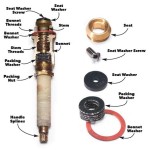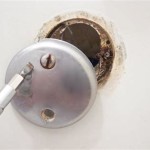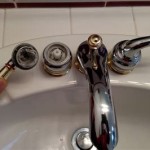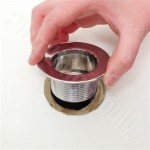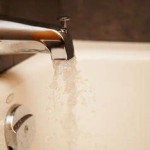How To Get Rid Of Mold In Bathtub
Mold in the bathtub is a common household problem, often caused by excess moisture and poor ventilation. It not only looks unsightly but can also pose health risks, particularly to individuals with allergies or respiratory conditions. Effectively eliminating mold requires a combination of cleaning and preventative measures.
Identifying the type of mold present is a crucial first step. While most bathroom mold is relatively harmless, some varieties can be toxic. If unsure, consult a professional mold remediation specialist. Generally, mold appears as black, green, or brown spots or patches, often with a musty odor.
Before beginning the cleaning process, gather the necessary supplies. These often include cleaning solutions (discussed below), scrubbing brushes (stiff-bristled brushes are ideal but avoid metal as it can scratch surfaces), rubber gloves, a spray bottle, safety goggles, and a mask. The mask and goggles protect against mold spores that may become airborne during cleaning.
Several effective cleaning solutions can be used to eliminate bathtub mold. A solution of bleach and water is a potent option. Mix one part bleach to ten parts water in the spray bottle. Apply the solution to the affected areas and allow it to sit for 15-20 minutes. Thoroughly scrub the mold with the brush, then rinse the area with clean water. Ensure adequate ventilation during this process as bleach fumes can be irritating.
White vinegar is a less harsh but effective alternative to bleach, particularly for individuals sensitive to chemical fumes. Undiluted white vinegar can be sprayed directly onto the mold. Allow it to dwell for an hour, then scrub and rinse. Baking soda is another natural cleaning agent. Make a paste by mixing baking soda with water. Apply the paste to the moldy areas, let it sit for 30 minutes, scrub, and rinse.
Commercial mold and mildew removers offer a convenient option. Always follow the manufacturer's instructions carefully, as these products may contain harsh chemicals. Ensure adequate ventilation when using these cleaners.
Hydrogen peroxide is another effective mold killer. A 3% hydrogen peroxide solution can be applied directly to the mold. Allow it to sit for 10-15 minutes, then scrub and rinse. This method is particularly useful for non-porous surfaces like tiles and grout.
Tea tree oil, a natural antifungal and antibacterial agent, can also be used. Mix a teaspoon of tea tree oil with a cup of water in a spray bottle. Spray the solution on the mold, let it sit for an hour, then scrub and rinse. This natural method is a good option for less severe mold infestations.
Regardless of the cleaning solution used, proper scrubbing is essential for effective mold removal. Pay particular attention to grout lines, corners, and other hard-to-reach areas. A toothbrush can be helpful for cleaning these tight spots. After scrubbing, rinse the entire area thoroughly to remove any remaining cleaning solution and mold debris.
Preventing future mold growth is crucial. Keeping the bathtub area dry is paramount. After each shower or bath, wipe down the surfaces with a towel or squeegee. This removes excess moisture that can contribute to mold growth.
Proper ventilation is also key to preventing mold. Run the bathroom exhaust fan during and after showers or baths. If no exhaust fan is present, opening a window can help circulate the air and reduce moisture levels. Ensure adequate ventilation in the bathroom at all times.
Regularly cleaning the bathtub can also help prevent mold. A weekly cleaning with a mild detergent can remove soap scum and other residues that can provide a food source for mold. Pay attention to areas prone to mold growth, such as grout lines and corners.
Addressing any leaks promptly is essential. Leaky faucets or pipes can contribute significantly to moisture buildup, creating a breeding ground for mold. Repairing leaks as soon as they are detected can prevent further mold growth.
Consider using a mold-resistant sealant around the bathtub. This can help prevent mold from growing in the cracks and crevices between the tub and the wall. Regularly inspect the sealant for any signs of deterioration and reapply as needed.
Using a dehumidifier in the bathroom can help reduce moisture levels and prevent mold growth, particularly in humid climates. Empty the dehumidifier regularly according to the manufacturer's instructions.
By implementing these cleaning and preventative measures, one can effectively eliminate mold from the bathtub and prevent its recurrence, maintaining a clean and healthy bathroom environment.

How To Clean Mold From Your Bathtub Using Toilet Paper Mental Floss

Best And Easiest Way To Completely Remove Mold Stains From Shower Bathtub Caulking World Inside Pictures In Bathroom Remover Get Rid Of

Learn How To Remove Black Mold From Shower Silicone Sealant Clean Deep Cleaning Tips House

Black Mold In The Shower How To Clean It Kitchen With Matt

What Do About Black Mold In The Bathroom Bob Vila

How To Clean The Grout Between Your Wall Tiles And Revamp Mouldy Mastic

What Is The Best Way To Clean Shower Grout Mold Anita S Housekeeping

8 Easiest Ways To Clean Mold

How To Remove Black Mold In The Bathroom And Shower Cabin

How To Get Rid Of Mold In Bathroom 2024 Tips From Puroclean



